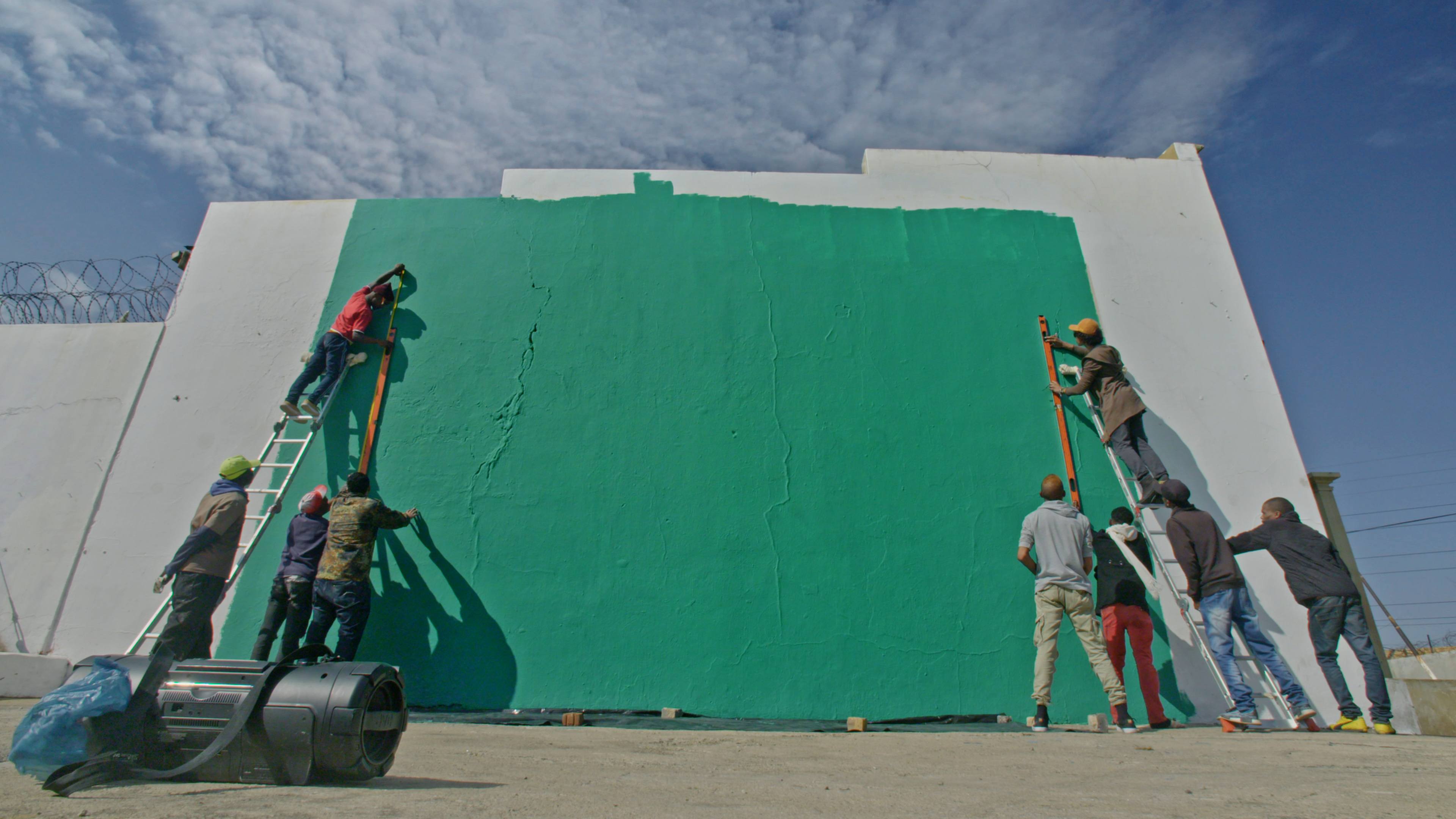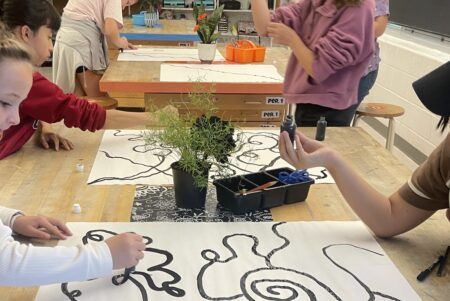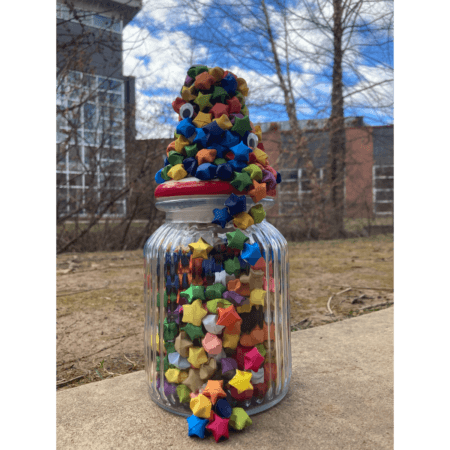Teaching with Contemporary Art
Teaching with Community

Robin Rhode and his team of art assistants. Production still from the Art in the Twenty-First Century Season 9 episode, Johannesburg. © Art21, Inc. 2018.
Artists are often portrayed as solitary creators, working in the isolation of their studios. While independent work and reflective thought are vital to many artists’ work, collaboration, connection, and community are essential to most artists’ practices. Sometimes community inspires the work, other times community is created through the work itself. Often the work is a result of both.
As a high school art teacher, helping my students recognize, reflect upon, and celebrate the circles of support that surround them can be affirming. I started our “Community” unit by viewing several examples of artwork by Judith Scott and Dan Miller, who are a part of the Creative Growth Art Center. Then students watched films about Robin Rhode and Kerry James Marshall.
Before viewing the video about Robin Rhode, students discussed the following questions: How can art create a positive impact on a community? Are there examples of art activities or groups here in Port Washington that promote a sense of community and civic engagement? Students then watched the “Johannesburg” episode featuring Rhode’s collaborative and interactive photographic murals.

Kerry James Marshall viewing his painting, Many Mansions, 1994, at the Art Institute of Chicago, 2000. Production still from the Art in the Twenty-First Century Season 1 episode, Identity. © Art21, Inc. 2001.
The final video the students watched before beginning their paintings was of Kerry James Marshall. Students learned about Marshall’s efforts to represent African Americans in a variety of settings and scenarios, depictions absent from paintings throughout history. Marshall also discusses the notion of “Mastry” and the necessity of understanding the language, constructs, and “rules” of traditional painting in an effort to create works that can speak the same language as the Old Master paintings, while showing contemporary themes and subjects with a particular focus on African Americans.
Upon viewing these films, engaging in dialogue with their classmates, and collecting images and photographs from the communities of their choosing, students set out to make their original “community” paintings. Each student chose to represent the sense of belonging in their own way. Maddie focused on her awakening political engagement, Bella painted her snow-bound neighbors, Emmy depicted an early-morning workout with the swim team, Joyce created a call-to-action piece confronting racial stereotyping and discrimination, and Jeannie painted a celebration of her cultural heritage. Within the community of our classroom, each student was able to create a painting about the importance of belonging to something bigger than themselves.
I created this playlist to incorporate many of the videos that I presented to my students to inform our “Community” unit and inspire their artwork. These artists find inspiration through their connections with communities, give their experiences shape and form, and imagine new possibilities of rehabilitation and growth. Working with groups that have been traditionally underrepresented, misrepresented, or ignored completely, the videos in this playlist remind us of the strength and significance of group bonds.





